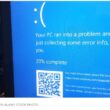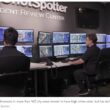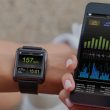Time is money
Today's RF engineers and technicians are faced with myriad issues related to keeping radio communication systems operational. Whether they are dealing with vehicle-based radio systems, fixed repeater sites or airborne radio communications, their primary focus is keeping the system online for maximum readiness.
In addition, many large-volume users of radio communication equipment, as well as radio original equipment manufacturers, face substantial costs when dealing with warranty support for radios that have been pulled from a system and returned, only to have the radio diagnosed as “no fault found.”
But isolating problems in radio communication systems can be a time-consuming process if you are not properly equipped. Using the latest equipment can save you time, money and effort in isolating problems in RF systems.
A typical radio communication system consists of a radio, amplifier, cable and antenna. When isolating problems, it is best to start from an operational standpoint with a simple over-the-air test to verify basic system performance.
While some engineers might disagree, it is possible to perform an over-the-air test on an installed radio and obtain useful results. With a simple procedure, you can perform over-the-air tests on both the transmitter and the receiver of the radio being tested, including:
- RF frequency error.
- Percent modulation for AM transmitters.
- Frequency deviation for FM transmitters.
- Relative power.
- Relative sensitivity of the receiver.
- Relative squelch on and squelch off level.
Some of these measurements are referred to as “relative” because the measurements are made over-the-air. Relative means that the measurement should be the same for a “known good” radio made under the same conditions. For this reason, when conducting an over-the-air test, it is very important to follow a consistent procedure. The most important parts of this procedure are:
- The position of the radio test set with respect to the radio. This should be exactly the same each time the test is performed.
- The frequency and deviation of the modulation source from the test system.
- The type of antenna on the radio test set.
- The RF frequency or channel used.
To determine whether a radio transmitter or receiver passes, a list of pass/fail criteria needs to be established. The criteria for frequency error and modulation are either specified by the manufacturer or derived from known test data. Over-the-air measurements will not affect frequency error and deviation (or modulation index for AM) measurements.
Relative measurements will be based on a “golden” radio (one that is known to be good). Results then will be compared to the results derived from the golden radio to indicate whether a problem exists.
The biggest enemy when making an RF measurement over-the-air is multipath. Multipath is the result of the transmitted or received signal following two or more paths to or from the antenna. The cause of the multiple paths is the RF signal reflecting off the ground, walls, ceilings, cars, equipment and buildings.
The effects of multipath depend on the relative phase of the signals. If the different signals are in phase, they combine and the signal strength increases. If the signals are out of phase, they partially cancel each other, decreasing the signal strength. RF signals arriving on different paths have different distances that they travel, which is what causes the phase differences.
The good news is that if you follow a consistent procedure, you can minimize the effects of multipath. The relative power, sensitivity and squelch levels should not vary by more than 5 or 6 dB. If they do, then that indicates there may be a problem. This leads to the next step, which is direct-connect testing.
Once you have completed the over-the-air test, it's time to get into the radio system to verify operation. A simple divide-and-conquer approach works well. By breaking the system in half, you can isolate the location of the problem quickly.
The most likely point to begin direct-connect tests is at the output of the amplifier. Using a radio test set, connect to the output of the amplifier and key up the radio to verify the transmitter is on frequency and outputting the proper power, and that the modulation is correct. A simple whistle test can show peak deviation in an FM system.
While connected to the radio, you also can perform a quick receiver sensitivity test. By connecting to the antenna input of the radio, you can generate RF with a 1 kHz modulating tone into the radio. By monitoring the speaker audio path, you can view SINAD and distortion of the audio. Then, by lowering the RF level, you can view the SINAD reading and correlate the receiver's sensitivity. With today's technology, a good radio should exhibit better than 12 dB SINAD at levels below -115 dBm.
If the radio is working properly but you still have a problem, you now must turn your attention to the cable and antenna using a technique called frequency domain reflectometry (FDR), which uses an RF frequency sweep to measure VSWR and distance to fault (DTF). A graph of return loss vs. distance shows the location of any fault that might be in the cable that leads to the antenna. (See Figure 1.) If there is no fault in the cable, then the only thing that will be shown is the location of the cable's end.
Once you know that the cable is good, you then can look at the VSWR vs. the frequency of the cable and antenna. You will sweep the antenna across the frequencies on which the radio is operating. You then can look at the graph of VSWR vs. frequency and determine whether the antenna is working correctly. (See Figure 2.)
By using the proper equipment, by knowing where to start and by using divide-and-conquer testing techniques, you can quickly isolate troubles in radio RF systems.
Rob Barden is director of product marketing for Aeroflex's radio test set line. He is a 24-year veteran of the test and measurement industry and graduated from Devry Institute in 1983.

















